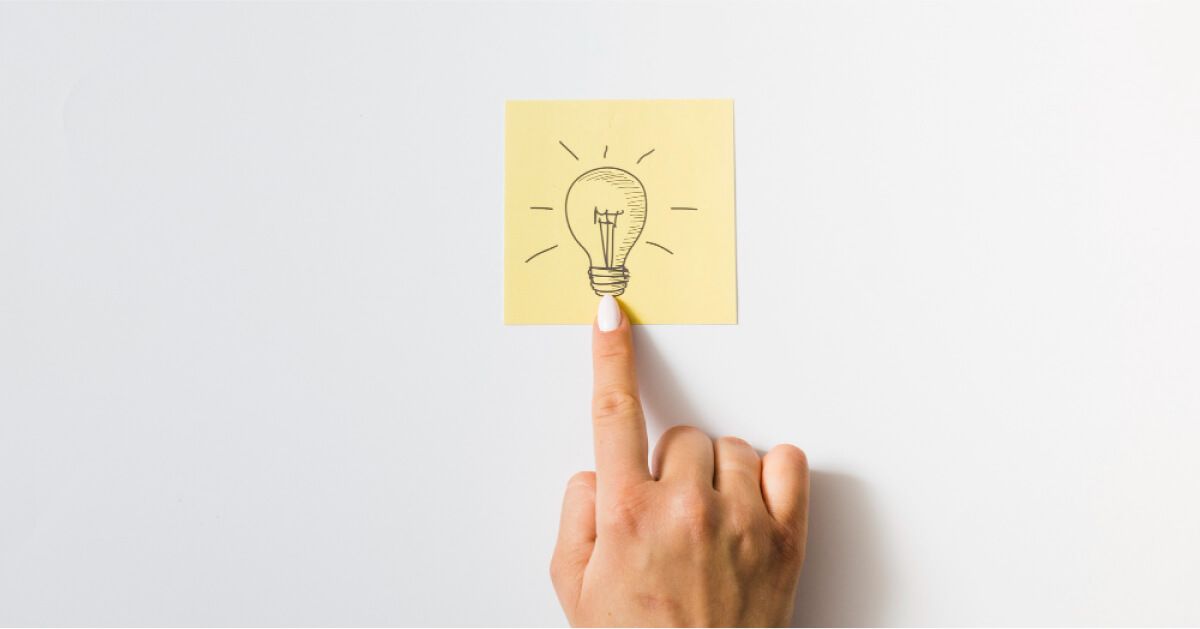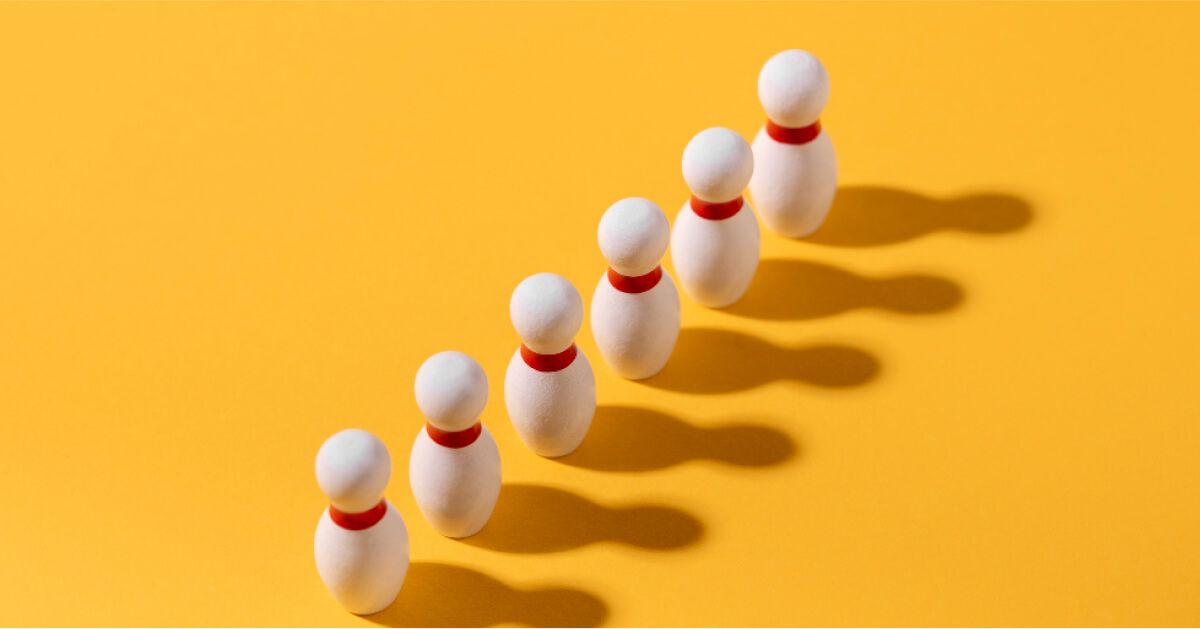Employee engagement calendar for 2026: A complete guide

Remember those old wall calendars we had at home? The ones with puppies in baskets or scenic landscapes? Each month, you’d flip the page, circle birthdays, mark family trips, maybe even add a cheeky “Do Not Disturb – Watching Friends Rerun” note. It wasn’t just about dates—it was a little ritual that kept us excited for what’s next.
That’s exactly what an employee engagement calendar should feel like at work—minus the puppies (unless that’s your thing). It’s not about cramming events in every week—it’s about creating meaningful moments that bring people together and make them want to flip to the next “month” with curiosity.
So, how do you turn a schedule into something employees actually look forward to? Let’s dive in.
- An employee engagement calendar enables HR teams to plan and organise meaningful activities that boost morale and productivity throughout the year.
- It ensures inclusivity by incorporating diverse holidays, wellness days, and team-building events tailored to company culture.
- Planning ahead with a calendar improves participation, communication, and alignment with business goals.
- Using feedback and tracking KPIs makes the calendar more impactful and relevant for employees.
- Tools like CultureMonkey’s platform simplify managing, scheduling, and measuring engagement activities effectively.
Why plan ahead your engagement calendar? 5 Data-backed reasons to use a calendar
- Boost job satisfaction and culture: Employee thriving is driven by a manager invested in their success (61%).
- Regular communication drives motivation: According to Trade Press Services, 85% of employees said they’re most motivated when management provides regular updates on company news.
- High engagement boosts performance and profits: According to Gallup, business units in the top quartile of engagement see 10% higher customer metrics, 17% higher productivity, 20% higher sales, and 21% higher profitability.
- Engagement boosts productivity: According to Gallup through Archie, teams in the top 25% for engagement are 18% more productive than teams in the bottom 25%.
- Work defines purpose for most employees: According to McKinsey & Company, 70% of employees say their sense of purpose is defined by their work, giving their lives meaning and direction.
You know why planning matters, but what do organizations actually gain from doing it right?
Benefits of establishing employee engagement calendars

Here’s how a thoughtfully planned employee engagement calendar 2026 can transform your workplace culture and performance:
An employee engagement calendar 2026 strengthens workplace culture by improving communication and boosting morale, by enhancing retention, job satisfaction, and mental well-being through activities.
By aligning initiatives with company goals, the calendar drives productivity, trust, and a more engaged, collaborative, and purpose-driven workforce.
- Encourages regular communication: An engagement calendar 2026 ensures timely and consistent updates, helping employees stay aligned with events and expectations. It supports smoother planning and better team coordination.
- Boosts mental well-being: Team-based employee engagement activities calendar entries promote collaboration and emotional support, lowering stress and improving overall mental health across the organization.
- Drives better performance: With an HR engagement calendar 2026, companies can monitor progress, highlight training gaps, and optimize support—leading to stronger individual and team output.
- Improves employee retention: A well-designed engagement calendar for employees shows appreciation and acknowledgment, helping employees feel valued and more committed to the organization.
- Elevates job satisfaction: When employees feel seen and appreciated through thoughtful initiatives in your engagement calendar, they’re less likely to seek opportunities elsewhere.
- Fosters stronger teamwork: Activities in an employee engagement calendar create bonds among colleagues, build trust, and promote better group dynamics and problem-solving.
- Reinforces company culture: Using your hr engagement calendar 2026 to plan meaningful events supports a positive environment where values and vision are actively lived.
- Raises employee morale: Recognizing contributions via your engagement calendar builds a culture of gratitude, resulting in higher motivation and day-to-day satisfaction.
- Boosts productivity: An inclusive and structured engagement calendar for employees keeps the workforce energized and goal-driven—leading to measurable productivity gains.
- Encourages innovation: Include brainstorming, workshops, or idea-sharing in your employee engagement calendar 2026 to nurture creativity and a forward-thinking mindset.
- Aligns efforts with goals: What is an engagement calendar if not a tool to connect everyday tasks with larger business objectives? Use it to make roles feel purpose-driven and impactful.
We’ve covered the advantages of having a plan; now it’s time to uncover practical tips that make engagement calendars actually work in real life.
Tips for keeping employee engagement calendars effective

An employee engagement calendar is a powerful tool to keep your workforce motivated and connected throughout the year. To make it truly impactful, it’s essential to plan thoughtfully, adapt as needed, and ensure activities resonate with your team’s needs and culture.
- Make it relevant: The HR calendar should be tailored to your organization’s unique culture, values, and goals. It should reflect the company’s current initiatives and needs.
- Get input: Get input from employees when creating the calendar. This will help ensure that events are relevant and engaging.
- Be flexible: Be flexible when it comes to scheduling and planning. Consider how events may need to be adjusted due to external factors such as the weather, holidays, or staff availability.
- Utilize technology : Utilize technology such as online calendars and communication tools to help keep employees informed and engaged.
- Measure results: Measure the results of events and activities to ensure that they are having the desired impact. This will help identify what is working in your company and what needs to be changed.
- Assign ownership for activities: Designate specific team members or committees to oversee and execute calendar events. This ensures accountability and smooth implementation.
- Incorporate feedback loops: Regularly review employee feedback to refine and improve future calendar activities. Continuous input helps maintain relevance and effectiveness.
- Balance professional and fun activities: Create a mix of skill-building events and enjoyable team-building activities. This ensures the calendar supports both employee development and workplace morale.
Knowing what to do is one thing but seeing it in action is another.
Employee engagement calendar for leaders and HRs in 2026
An employee engagement calendar for leaders and HRs in 2026 helps plan meaningful, inclusive activities throughout the year. It ensures employees feel appreciated, connected, and aligned with company values at every stage.
The employee engagement calendar 2026 outlines monthly activities through cultural events, mental health initiatives, volunteer drives, and team-building moments year-round.
Thoughtfully planned, it aligns with company culture, encourages participation, and strengthens workplace relationships and productivity.
January
Start your employee engagement activities calendar strong with activities that inspire goal-setting, reflection, and inclusivity to set the tone for the year.
1. New Year’s Day (January 1)
- Host a virtual or in-person “New Year’s Resolution” board.
- Share appreciation messages for employees’ contributions in 2024.
- Organize a goal-setting workshop to kickstart the year.
2. Martin Luther King Jr. Day (January 20)
- Arrange a discussion on diversity and inclusion.
- Encourage employees to participate in local volunteer opportunities.
- Share inspirational content highlighting Dr. King’s legacy.
3. National Mentoring Month (All of January)
- Pair employees with mentors for professional development.
- Host workshops on the benefits of mentoring relationships.
- Celebrate successful mentoring stories within the company.
February
Use your employee engagement calendar in February to spread kindness, celebrate diversity, and nurture stronger workplace connections.
1. Black History Month (All of February)
- Host weekly lunch-and-learn sessions on Black leaders’ contributions.
- Share daily or weekly trivia about Black history.
- Partner with local organizations to promote cultural understanding.
2. Valentine’s Day (February 14)
- Organize a “Spread the Love” appreciation campaign.
- Set up a gratitude wall where employees can share notes.
- Offer themed treats like heart-shaped cookies or chocolates.
3. Random Acts of Kindness Day (February 17)
- Encourage employees to perform and share acts of kindness.
- Provide small thank-you notes for employees to exchange.
- Organize a charity event to give back to the community.
March
March is the perfect month in your engagement calendar ideas to spotlight recognition, equality, and company pride.
1. International Women’s Day (March 8)
- Host a panel discussion with women leaders.
- Share inspiring stories of female trailblazers within the company.
- Provide mentorship opportunities for aspiring women professionals.
2. St. Patrick’s Day (March 17)
- Encourage employees to wear green and decorate workspaces.
- Host a trivia game about Irish culture.
- Provide themed snacks or beverages like green bagels or mocktails.
3. Employee Appreciation Day (March 1)
- Distribute thank-you notes or small gifts to employees.
- Host a team lunch or celebratory event.
- Recognize outstanding contributions with awards or shout-outs.
April
April’s employee engagement calendar ideas focus on sustainability, mindfulness, and family-friendly initiatives that strengthen community ties.
1. Earth Day (April 22)
- Organize a tree-planting or cleanup event.
- Encourage employees to share eco-friendly practices.
- Conduct a sustainability workshop or webinar.
2. Stress Awareness Month (All of April)
- Offer weekly mindfulness or meditation sessions.
- Provide resources and tips to manage workplace stress.
- Create quiet zones for relaxation in the office.
3. Bring Your Child to Work Day (April 25)
- Host activities and tours for employees’ children.
- Create interactive sessions to showcase the workplace.
- Offer fun games or workshops for children to enjoy.
May
The monthly employee engagement calendar in May promotes mental health, well-being, and gratitude to help teams recharge and connect.
1. Mental Health Awareness Month (All of May)
- Host mental health workshops with licensed professionals.
- Share weekly mental health tips and resources.
- Offer a “self-care day” for employees.
2. Memorial Day (May 26)
- Share stories of veterans within the workforce.
- Encourage employees to participate in a moment of silence.
- Organize a charity drive for veterans’ organizations.
3. National Employee Health and Fitness Day (May 15)
- Host a company-wide step challenge or fitness event.
- Provide free health screenings or wellness consultations.
- Share healthy snack options in the workplace.
June
June’s HR calendar of activities celebrates inclusion, diversity, and workplace safety to build stronger cultural alignment.
1. Pride Month (All of June)
- Host an educational session on LGBTQ+ history and inclusion.
- Create a pride-themed workspace or virtual background.
- Encourage employees to share personal stories or allyship experiences.
2. Juneteenth (June 19)
- Share the history and significance of Juneteenth.
- Support local Black-owned businesses through partnerships.
- Organize a company-wide celebration or learning session.
3. National Safety Month (All of June)
- Conduct safety drills and training sessions.
- Share daily or weekly safety tips relevant to the workplace.
- Recognize teams with exemplary safety records.
(Source: Gallup)
July
Midway through the employee engagement ideas for each month, July is ideal for reflection, celebration, and mid-year morale boosts.
1. Independence Day (July 4)
- Host a patriotic trivia game or picnic.
- Provide red, white, and blue-themed treats.
- Encourage employees to share what freedom means to them.
2. Mid-Year Check-In (All of July)
- Conduct one-on-one meetings to review goals.
- Host a mid-year town hall to discuss company progress.
- Organize team-building activities to reinvigorate engagement.
3. National Give Something Away Day (July 15)
- Organize a donation drive for local charities.
- Encourage employees to exchange books or small items.
- Host a workplace swap meet to promote sustainability.
August
In your employee engagement activities by month, August focuses on holistic wellness, community support, and personal growth.
1. National Wellness Month (All of August)
- Offer free fitness or yoga classes.
- Host a hydration challenge to encourage better health habits.
- Share weekly wellness tips or recipes.
2. Back to School Drive (August 15-31)
- Collect supplies for local schools or students in need.
- Offer flexible schedules for employees preparing for back-to-school season.
- Partner with local schools for mentorship programs.
3. Simplify Your Life Week (August 4-10)
- Host workshops on time management and decluttering.
- Provide resources on stress reduction and efficiency.
- Encourage employees to share tips for simplifying their routines.
September
September’s benefits communication calendar themes encourage rest, cultural awareness, and unplugging to restore balance.
1. Labor Day (September 2)
- Host a “Day of Relaxation” for employees with fun activities.
- Share thank-you messages highlighting employee contributions.
- Provide small gifts or tokens of appreciation.
2. Hispanic Heritage Month (September 15 - October 15)
- Organize cultural events or lunch-and-learn sessions.
- Share stories of Hispanic employees’ contributions.
- Partner with Hispanic-owned businesses for workplace events.
3. National Day of Unplugging (September 6)
- Encourage employees to take a digital detox day.
- Provide resources on balancing technology use and mindfulness.
- Organize screen-free activities like outdoor team-building events.
October
October’s engagement calendar for employees blends wellness, creativity, and recognition to keep engagement high through fall.
1. Mental Illness Awareness Week (October 6-12)
- Host workshops to break the stigma around mental health.
- Share resources for mental health support.
- Create a safe space for employees to discuss mental health.
2. Halloween (October 31)
- Host a costume contest or themed workspace decoration challenge.
- Offer trick-or-treat goodie bags for employees.
- Organize a pumpkin-carving competition.
3. Customer Service Week (October 7-11)
- Celebrate customer service teams with special shout-outs.
- Host a lunch or event to recognize their hard work.
- Provide small gifts or certificates of appreciation.
November
Your benefits communications calendar for November emphasizes gratitude, learning, and heritage appreciation.
1. Native American Heritage Month (All of November)
- Share educational resources about Native American history and culture.
- Invite speakers to discuss Native American traditions and contributions.
- Partner with Native-owned businesses for workplace initiatives.
2. Thanksgiving (November 28)
- Organize a potluck or gratitude lunch.
- Encourage employees to share what they’re thankful for.
- Host a volunteer day for local food banks or charities.
3. National Career Development Month (All of November)
- Offer career coaching or mentorship sessions.
- Share resources for skill development and career growth.
- Organize workshops on setting career goals.
December
Close the monthly employee engagement ideas with reflection, celebration, and inclusivity to end the year on a high note.
1. International Day of People with Disabilities (December 3)
- Share resources to raise awareness about disabilities.
- Host an inclusion workshop focusing on accessibility.
- Recognize the contributions of employees with disabilities.
2. End-of-Year Celebration (December 20-31)
- Host an awards ceremony to celebrate employee achievements.
- Organize team outings or holiday parties.
- Share a year-in-review video highlighting company successes.
3. International Human Solidarity Day (December 20)
- Organize a charity drive to support underserved communities.
- Host a session on global cooperation and team unity.
- Encourage employees to share solidarity initiatives they support.
Now that you’ve seen how the year unfolds, let’s explore how to promote your engagement calendar in ways that boost participation and excitement.
Best practices for promoting engagement through the calendar

To maximize participation and impact, promoting your employee engagement calendar effectively is just as important as creating it. Here are best practices to keep your events visible, memorable, and engaging for everyone.
- Utilize automated reminders: Automated reminders are a great way to ensure that your teams or customers are reminded of events, meetings, and other activities. This can help boost engagement and ensure everyone is on the same page.
- Create personalized messages: Personalized messages can help to make your calendar events stand out and attract more attention. You can include specific details about the event or meeting, such as the location, time, and agenda.
- Leverage social media: Social media is an effective tool for promoting events and activities on the calendar. You can share event reminders and updates on social channels like Twitter, Facebook, and Instagram.
- Add visuals: Visuals are a great way to draw attention to calendar events. You can include photos, AI-generated images, videos, and infographics to make your calendar events more engaging.
- Host contests or giveaways: Contests and giveaways can help to increase engagement with your calendar events. You can offer prizes for attending or participating in events or for sharing calendar events on social media.
- Make it easy to share: Make it easy for your staff and customers to share events on their own social media accounts. This helps spread the word about your calendar events and increase engagement.
- Send post-event follow-ups: Follow-up emails or surveys after events in your employee engagement calendar template help capture feedback and maintain momentum. It also supports better planning for employee engagement ideas for each month.
- Integrate with company tools: Sync your employee engagement activities calendar with platforms like Slack, Teams, or Google Calendar. This ensures that events appear within daily tools for better calendar engagement.
- Highlight featured events monthly: Feature one key event from your monthly employee engagement calendar ideas in newsletters or meetings. This builds anticipation and encourages more participation.
Promotion drives visibility, but variety drives enthusiasm.
Employee engagement is the art and science of engaging people in authentic and recognized connections to strategy, roles, performance, and happiness to leverage, sustain, and transform work into results.
Types of activities and events to include on the employee engagement calendar

Here are some of the types of office activities and events to consider for inclusion on an engagement calendar.
An effective employee engagement calendar should include a variety of activities to foster connection and morale. Recognizing milestones, promoting wellness and encouraging learning, enhance engagement.
Adding professional development and mental health initiatives ensures a balanced, inclusive calendar that motivates employees and aligns with workplace culture and values.
- Team-building activities: From icebreakers to escape rooms, team-building strengthens collaboration and breaks barriers. These are essential employee engagement calendar ideas for boosting communication and unity. Try scheduling a monthly "act of kindness day" for extra fun and connection.
- Celebrate international days: Key dates like Earth Day or Bagel Day add fun and meaning to your workplace events calendar. They’re perfect for boosting morale with casual dress days, potlucks, or trivia lunches. These are flexible employee engagement ideas for each month of the year.
- Employee appreciation day: Show gratitude through awards, messages, or shout-outs across your weekly engagement calendar. It increases motivation, job satisfaction, and loyalty across all departments. A must-add to any employee engagement calendar template.
- Professional development opportunities: Workshops, seminars, or role-specific classes elevate employee skills and confidence. These make great additions to your benefits communication calendar. They also support career growth and enhance overall engagement calendar effectiveness.
- Mental health awareness month: Host open conversations, wellness resources, or mindfulness sessions in May. This initiative fits perfectly in your hr yearly calendar or calendar engagement strategy. It also nurtures a safe, stigma-free space for all employees.
- Social events: Game nights, potlucks, or happy hours foster community beyond work tasks. These fun activities belong in every monthly employee engagement calendar idea list. Great for informal bonding and boosting day-to-day satisfaction.
- Encourage employees with recognition: Use awards and shout-outs for milestones or standout performance. It’s a simple way to enrich your employee engagement activities calendar. Recognition programs can fit into any benefits communication calendar too.
- Volunteer opportunities: Include local charity work or team volunteer days in your workplace events calendar. These connect employees with community purpose and each other. An impactful addition to your monthly employee engagement ideas.
- Health and wellness activities: Fitness challenges, yoga, or seminars promote a strong work-life balance. These are great additions to your hr activity calendar or weekly engagement calendar. They contribute to happier, healthier, and more engaged teams.
- Learning opportunities: Lunch-and-learns, online courses, or certifications help employees grow consistently. These are vital employee engagement calendar ideas with long-term ROI. Perfect for keeping your calendar engagement strategy well-rounded.
- Outings: Bowling nights, hikes, or picnics provide refreshing change and relationship-building time. Include outings in your monthly employee engagement calendar ideas rotation. They're a classic, high-impact win on any hr yearly calendar.
Now that you have your activity list, let’s talk about how to bring it all together in an effective, easy-to-manage engagement calendar.
Engagement occurs when workers trust leaders and feel an emotional connection to the organization – the same way they did their first day on the job.
How to create an effective engagement calendar?

An engagement calendar is a great way to ensure that your team is motivated and engaged. Here are seven steps to creating an effective employee engagement calendar:
- Set SMART goals: Before creating your calendar, set SMART goals to ensure that it helps your workforce reach their desired objectives. SMART stands for Specific, Measurable, Achievable, Relevant, and Time-Bound.
- Research employee interests: Talk to your employees and find out what activities they’d like to do together. This will help you create a calendar that caters to their interests.
- Create a schedule: Create a schedule that works for everyone. Ensure you include enough time for the planned activities and stick with them.
- Involve employees in the planning process: Involve your employees in the planning process. They would be more likely to participate in activities if they had a hand in planning them.
- Promote the calendar: Once you’ve created the calendar, promote it to your workforce. You can do this through email, posters, or even team meetings.
- Track progress: Keep track of how well the activities are going. This will allow you to make changes and ensure that everyone is engaged.
- Celebrate success: Celebrate the successes of your workforce. Acknowledging their accomplishments will help keep them motivated and engaged.
Once you know how to create your engagement calendar, it’s time to understand how global and cultural nuances shape the perfect plan.

Global lens: Balancing cultural & regional holidays
When creating an HR calendar of activities, it’s crucial to respect and celebrate the diversity of your workforce. Thoughtful inclusion of engagement holidays and traditions across cultures ensures your weekly engagement calendar resonates with everyone.
Here’s how to strike the right balance:
- Map key regional observances: Start by researching major cultural and religious holidays in the regions where your employees work. This step helps avoid scheduling conflicts and shows consideration in your calendar engagement planning.
- Offer flexible participation options: Not all employees celebrate the same holidays. Build flexibility into your weekly engagement calendar, allowing people to participate in activities that feel meaningful to them without pressure.
- Highlight cultural diversity in events: Incorporate multicultural fun calendar ideas for work that educate and celebrate differences—like international potlucks or themed team-building sessions—making your employee engagement ideas for each month more dynamic.
- Use inclusive communication: Frame invitations and reminders in ways that welcome everyone. Avoid assumptions that all employees observe the same engagement holidays, which can alienate instead of engage.
- Balance global and local focus: Combine universal events like wellness weeks with local traditions, creating a layered HR calendar of activities that connects employees globally and locally.
- Regularly review and refine: Use feedback to improve your calendar engagement strategy over time. A globally sensitive weekly engagement calendar is always evolving to meet the needs of your diverse workforce.
Inclusivity adds heart, but measuring success adds proof.
Isn’t an employee engagement calendar just another “feel-good” HR exercise with no measurable ROI?
It’s easy to dismiss a human resources calendar as a collection of themed days and fun activities. But when the monthly calendar ideas is driven by data and employee insights, it becomes a powerful engagement engine.
A structured human resources annual planning calendar ensures recognition, wellness, inclusion, and feedback. It helps HR leaders track participation, measure sentiment shifts, and link engagement activities to real business outcomes.
Recent research by HR.com shows that companies offering highly personalised employee experiences saw a 30% increase in engagement and a 20% productivity boost, proving that tailored, ongoing initiatives directly influence performance (HR.com, 2024).
So, far from being an HR buzzword, an annual HR calendar is a practical, data-backed way to drive measurable results across the employee lifecycle.
How to measure the success of your engagement calendar?

An employee engagement calendar is an excellent tool for fostering a motivated and engaged workforce, but its success depends on how well it meets its intended objectives. Measuring its impact is crucial to ensure continuous improvement, promote employee well-being, and align with organizational goals. Here are key ways to evaluate the success of your engagement calendar:
Measuring your engagement calendar’s success involves tracking participation, gathering post-event feedback, and observing productivity, collaboration, and morale trends.
These insights help refine your employee engagement calendar, making it more impactful, relevant, and aligned with organizational goals and employee well-being.
- Track participation rates: Monitor turnout for scheduled employee engagement activities like wellness challenges or team games. If turnout is low, refine your employee engagement calendar ideas using employee input. This is a simple way to improve your hr engagement calendar 2026 effectiveness.
- Measure feedback post-events: Use short surveys after events like Stress Awareness Month or Kindness Day. Genuine feedback boosts your employee engagement activities calendar with fresh insights. It also helps improve future monthly employee engagement ideas that truly resonate.
- Analyze productivity changes: Compare team productivity before and after key calendar engagement events. Well-executed career workshops in your engagement calendar for employees often raise output. Use these insights to improve your weekly engagement calendar planning.
- Observe collaboration improvement: Events like pizza parties or game days from your employee engagement calendar template can foster teamwork. Measure if communication and collaboration increase after such informal interactions. These events strengthen your workplace events calendar and internal culture.
- Evaluate retention rates: Compare attrition before and after your engagement calendar 2026 highlights like Mental Health Month. Better retention is a strong sign your hr activity calendar is on track. It’s a key metric in any long-term benefits communication calendar strategy.
- Monitor long-term morale trends: Track morale spikes after consistent events like holiday parties or employee appreciation day. This keeps your employee engagement ideas for each month feeling purposeful and energizing. It’s also a solid foundation for a successful hr yearly calendar.
- Assess alignment with values: Check if key events reflect your company’s mission—like Women’s Day or World Mental Health Day. A well-aligned engagement calendar reinforces your values across teams. That’s the true goal behind answering what is an engagement calendar for your business.
After learning how to measure results, let’s explore how to maintain engagement momentum with year-round activities that keep culture alive.

Simplify your Employee Engagement Planning
Elevate your workplace with the 2026 engagement calendar, filled with ideas to create a positive and productive culture.
Download NowYear-round activities to improve employee engagement

A motivated and engaged workforce requires strategic activities throughout the year. Including meaningful events ensures employees stay connected, valued, and productive. Here are ideas for keeping employees engaged:
- Peer mentoring programs: Foster growth and collaboration by encouraging team members to mentor one another.
- Monthly skill-sharing sessions: Create professional development opportunities where employees can teach skills and share knowledge.
- Recognition spotlights: Boost employee morale by acknowledging achievements during birthday and anniversary celebrations.
- Quarterly brainstorming forums: Engage employees by encouraging them to propose innovative employee engagement ideas.
- Celebrating milestones: Plan meaningful events for milestones like work anniversaries or random acts of kindness days.
- Team outings: Strengthen team spirit with events like international beer day outings or an ice cream social featuring various ice cream flavors.
- Holiday cheer initiatives: Express gratitude during the holiday season with activities like an ugly sweater day, break room treats, or small gifts.
Including these activities in an employee engagement calendar ensures a healthy work-life balance while fostering an inclusive environment. These initiatives, from administrative professionals appreciation to stress management workshops, contribute to a positive work environment.
Consistency is key, but you can’t improve what you don’t measure.
Role of employee engagement survey in maintaining activities’ calendar
An employee engagement survey is a vital tool to keep your engagement calendar for employees aligned, effective, and meaningful throughout the year.
Here’s how it helps HR teams create impactful activities and maintain momentum:
Employee engagement surveys help HR design calendars that truly resonate by identifying valued activities, tracking trends, and incorporating inclusive engagement holidays.
They enable data-driven planning, prioritize impactful initiatives, ensuring the engagement calendar stays relevant, effective, and aligned with employee preferences and organizational goals.
- Identify what employees value: Surveys help uncover what employees actually enjoy, allowing HR to add fun calendar ideas for work and meaningful events into the hr calendar of activities that resonate with everyone.
- Plan with data, not guesswork: Instead of relying on assumptions, survey results guide which activities belong in the weekly engagement calendar or annual employee engagement ideas for each month, ensuring relevance and participation.
- Track calendar engagement trends: Feedback from surveys lets HR monitor calendar engagement over time, spotting which activities are popular and which need tweaking for better impact.
- Include diverse engagement holidays: Surveys give insight into cultural and personal preferences, helping HR incorporate inclusive engagement holidays and observances into the calendar that reflect the workforce’s diversity.
- Prioritize initiatives effectively: Resources are limited, and surveys help HR prioritize which events in the hr calendar of activities will deliver the most value to employees and the organization.
- Foster year-round connection: Continuous feedback ensures the engagement calendar for employees remains dynamic, with fresh employee engagement ideas for each month that keep the workplace lively and employees motivated.
After understanding the role of surveys in maintaining engagement, let’s explore how CultureMonkey takes your engagement calendar to the next level.
How does CultureMonkey’s employee engagement survey power your employee engagement calendar?
What if your employee engagement calendar could tell you exactly when morale dips or motivation peaks? CultureMonkey’s employee engagement survey makes that possible, giving HR leaders real-time insight to design engagement calendars that are data-backed, human-centered, and aligned with every team’s rhythm.
- Pre-built, science-backed templates: CultureMonkey’s People Science team curates survey templates aligned with engagement drivers to help you plan your engagement calendar format around trust, recognition, and belonging, not guesswork.
- Real-time AI sentiment clustering: The platform’s sentiment engine detects emotion patterns across comments, helping you fill your human resources annual planning calendar with initiatives that respond to real employee moods, not surface metrics.
.webp)
Transform Engagement Plans Into Measurable Culture Wins
- Multi lingual Surveys
- White Glove Onboarding
- People Science Backed Reports
- Enterprise Grade Security
- Custom pulse surveys with automation: CultureMonkey adjusts reminders and reporting of pulse surveys automatically through your HR annual calendar template to track the impact of each monthly calendar idea, with no manual effort.
- Manager-level dashboards: CultureMonkey provides local team dashboards so managers can plan fun calendar ideas for work that solve their team’s specific engagement gaps, without waiting for quarterly HR reports.
- Driver and theme analytics: Go beyond scores and identify which engagement drivers need targeted activities in your annual HR calendar, based on CultureMonkey’s driver correlation data.
- Benchmark and trend intelligence: Compare engagement calendars across departments using CultureMonkey’s benchmarking engine to see where your human resources calendar can improve participation and retention.
- Closed-loop action tracking: Every survey insight converts into an assignable action inside CultureMonkey’s task tracker, ensuring your sample employee engagement calendar moves from planning to measurable impact.
- Multi-language & anonymity engine: CultureMonkey’s anonymity guard and translation support make your engagement calendars safe and inclusive for every employee voice worldwide.
Conclusion
Fostering employee engagement isn’t a checkbox—it’s a continuous, collaborative journey. As a people leader, you play a critical role in creating a space where employees feel empowered, heard, and inspired to contribute. But remember, engagement isn’t one-sided.
It thrives when employees are involved in shaping the culture. Building an inclusive and dynamic workplace HR calendar is a smart move toward cultivating that energy—one that inspires collaboration, initiative, and innovation.
To make meaningful progress, you need to go beyond assumptions and truly listen to your team. That’s where regular employee engagement surveys become essential. From tracking employee pulse scores to diving deep into life cycle feedback, these tools offer real-time insights that help align initiatives with what your workforce actually values. Feedback isn’t just data—it’s direction.
CultureMonkey empowers organizations to act on this direction with ease. Our intuitive platform makes it simple to run surveys, analyze feedback, and share recognition—all in one place. With CultureMonkey, you gain a powerful tool to boost employee morale, enhance communication, and build a vibrant company culture.
Book a demo with CultureMonkey!
FAQ
1. How do I create an engagement calendar?
Create an engagement calendar by identifying goals, gathering employee input, and aligning activities with your company culture. Include diverse events such as team-building activities, professional development workshops, and wellness challenges. Use technology to track participation and feedback, ensuring the calendar remains dynamic and promotes a motivated and engaged workforce. Regularly review and update the calendar to reflect changing employee needs and organizational priorities.
2. What is an employee engagement calendar?
An employee engagement calendar is a structured tool used by organizations to schedule activities and events aimed at improving employee satisfaction, morale, and productivity. It includes initiatives like team lunches, recognition programs, and wellness challenges, fostering a positive work environment and a healthy work-life balance for an engaged workforce. Regularly updating the calendar ensures it remains relevant and aligned with both employee and organizational goals.
3. What are the 5 C's of employee engagement?
The 5 C's of employee engagement are Connect, Career, Clarity, Contribute, and Celebrate. These pillars focus on building strong relationships, promoting professional development, ensuring clear communication, enabling impactful contributions, and recognizing achievements to foster a positive work environment. When effectively implemented, they create a culture of trust and collaboration, driving long-term employee satisfaction and engagement.
4. Why should HR teams use employee engagement calendars?
Employee engagement calendars help HR plan and execute meaningful activities that boost morale, foster connection, and reinforce company culture year-round. They provide structure, ensure inclusivity, and keep employees motivated through consistent recognition and interaction—ultimately improving retention, productivity, and workplace satisfaction by aligning initiatives with organizational goals and employee needs.
5. How do I choose dates for a global workforce?
For a global workforce, prioritize cultural inclusivity and flexibility. Research regional holidays, time zones, and observances to ensure your calendar respects diverse traditions and work patterns. Balance universally engaging activities with localized events, and offer virtual or asynchronous options to accommodate everyone. Employee surveys can also guide which global dates matter most to your teams.
6. How often should an employee engagement calendar be updated?
Your employee engagement calendar 2026 should be updated monthly or quarterly based on feedback and business needs. A flexible hr engagement calendar 2026 ensures relevance across all departments. Use a weekly engagement calendar or monthly employee engagement calendar ideas to stay proactive. Regular updates keep your engagement calendar for employees aligned with evolving team goals and morale.
7. How do you plan events on an employee engagement calendar?
Start by mapping monthly employee engagement ideas that align with business goals and employee interests. Use an employee engagement calendar template to plan ahead using insights from a benefits communication calendar or hr activity calendar. Vary your employee engagement activities calendar with creative, seasonal events from your engagement calendar 2026 and encourage two-way calendar engagement.
8. Can an employee engagement calendar be used for remote teams?
Absolutely! A virtual-friendly employee engagement calendar 2026 can bridge distances and boost morale. Use employee engagement ideas for each month to plan remote-friendly activities like online games or webinars. A well-structured engagement calendar or workplace events calendar ensures inclusion, while a digital hr yearly calendar keeps remote teams engaged through a consistent engagement calendar for employees.
9. How can we align the calendar with company culture and values?
To align your employee engagement calendar 2026 with company culture, choose activities that reflect core values and foster inclusivity. Use an employee engagement calendar template to plan monthly employee engagement calendar ideas that support teamwork, diversity, and employee well-being. This ensures your engagement calendar genuinely resonates with employees and strengthens workplace connections.
10. How far in advance should the calendar be planned?
Ideally, plan your HR calendar of activities 2026 and workplace events calendar 2026 at least 3–6 months in advance. Use a monthly employee engagement calendar template to outline key dates, leaving room for adjustments. Early planning ensures better participation, resource allocation, and allows time to craft meaningful monthly employee engagement calendar ideas aligned with goals.
11. How can data from an employee engagement calendar be used to improve future initiatives?
Data from an employee engagement calendar reveals participation trends, employee preferences, and the effectiveness of past activities. Analyzing this feedback helps HR identify what resonates, adjust underperforming initiatives, and tailor future events to better align with employee needs and company goals, ensuring ongoing relevance, higher engagement, and a more impactful engagement strategy over time.
12. Who should provide input when building an employee engagement calendar?
Input for an employee engagement calendar should come from HR, team managers, leadership, and employees themselves. HR ensures alignment with company policies, managers offer team-level insights, leadership defines strategic priorities, and employees share preferences and needs. Including diverse perspectives creates a well-rounded calendar that resonates with employees and supports organizational culture and goals effectively.








